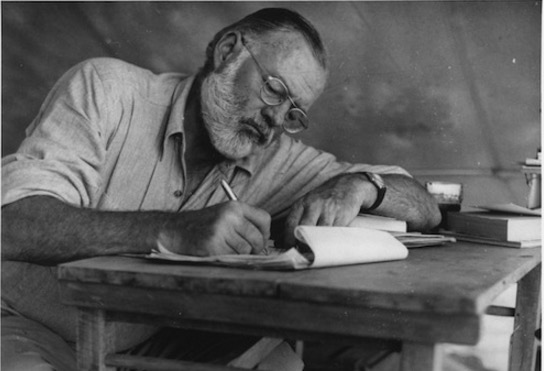
“We are living in a story. If it’s a story we don’t know, it might have a bad ending.” ~ Carl Jung
~
People have been telling stories to each other since the beginning of time.
We think in stories. We conceive the world as a story, our lives as a story, and other people as walking stories. Our story is a fundamental part of our perception; it is the framework in which we make sense of our surroundings and move through the world.
Someone who doesn’t agree with this might say, “Well, I don’t think in stories. I just live, breathe, and experience. There’s no need to create a story—everything just is.”
As much as I appreciate this perspective, I don’t agree with it.
If I asked this person who their father is, they most likely wouldn’t say, “Well, my father just is.” What they would do is start to tell a story, explaining what they’re father is like, what adversity he has faced, where he came from, how he found his career, what their relationship is like, and what his flaws are.
We think in stories, and I’d like to explore why.
When we look at the world, we believe what we are seeing is a countless array of different objects—books, cars, tables—but this is not exactly true. What we are seeing is a set of tools, and we tend to identify the use of something before we acknowledge it as an object. We often see things in accord with how we use them and what their purpose is before we recognize them as “things” that exist in and of themselves.
We approach the world from a place of meaning, and stories are the ultimate representation of that meaning. Stories are how we organize meaning in our minds.
So the question is: how do we tell a good story? If we are always telling stories—about our lives, about the world around us, about our relationships with other people—how do we give those stories meaning?
There are five essential parts of a story. If we can master each part, then we can start to piece together our own stories and make them something worth telling:
1. There is a main character.
That’s each of us—the central figures of our stories. We can be the hero if we aspire for good and take responsibility for our lives. We can be the villain if we allow ourselves to be degraded and grow bitter and resentful. We can be the victim if we let ourselves be discouraged and overwhelmed by the challenges we face, making us resort back to infantile and needy behavior.
The more attention we pay to ourselves and the more we recognize our story as having cosmic significance, the more likely we will be to step into the role of the hero. To create a foundation for a beautiful story, as opposed to a tragedy, it is necessary that we become our own hero, which takes tremendous courage and the willingness to face our deepest fears.
2. There is a plot.
This represents our goals in life and our general orientation. How do we look at our lives? What is it that we want? When we align ourselves with a healthy set of goals and a cultivated worldview, we layout a sustainable plot for our stories.
A good plot is the arena in which the main character manifests their potential into reality; how the hero moves through life and asserts their identity. It is the momentum of our story. How we engage with this momentum, the evolution of self, and the flow of our lives are key factors in determining the kind of story we are living in.
3. There is a setting.
This is where we are, in relation to where we are going. When we talk about setting, we aren’t talking about scenery or geography or physical location. The setting implies our psychic location—where are we in our story? Are we on the brink of defeat, or are we on the verge of mastering our own existence? Are we on an uphill climb or a downhill descent, an incline or a decline, an upswing or a downswing?
The setting is the foundation of the plot; it is the stadium that surrounds the arena in which the main character manifests their potential and faces conflict. We need to know where we are in the story, because when we don’t know, it’s hard to know what actions to take. Knowing where we are in our story involves looking deeper into our minds and our surroundings with curiosity, sincerity, and a deep desire to find our place.
4. There is conflict.
Luckily, we don’t have to look too hard to find this. The conflict makes up the challenges we face—the adversity we must contend with. The story is not interesting without conflict, nor is it really worthwhile without having to overcome some obstacles. This is the dragon of chaos which the hero must slay in order to save the virgin. It is the darkness we must fight to protect the innocent and preserve our better nature.
We must have the courage to face what we are most afraid of and do battle with the enemies of our soul, otherwise the story has no substance, no meaning. We need conflict—a test of character—in order to grow as human beings and meet our potential. If the setting is the stadium, the plot is the arena, and the main character is in the arena, then the conflict is what we must face on the other end.
5. There is a resolution.
This is the life lesson that comes out of the conflict—the deeper message that is revealed through the course of the story. This is what the main character learns through their battle with chaos, grappling with fate, and their own mortality. It’s the principle meaning that allows us to go on to win more battles and continue to sustain and defend the good around us.
If there are no morals, no ethics, no lessons identified in our stories, it means we’re not digging deep enough and we’re not looking for the truth. No code or value system can be repeated over time with continually positive outcomes. If there is no resolution, the darker elements of our story continue to dictate our actions and we are defeated by our shadow self. The dragons keep coming back and tearing us to pieces, unless we garner a deeper truth from our story that acts as a sword to keep the dragons at bay.
When we build ourselves into the hero, take skillful action, recognize where we are, face the darkness that dwells beneath, and identify the deeper meaning that is being unveiled through the journey, we make our lives into a beautiful, sustainable, and meaningful story that allows us to endure the suffering that comes along with being human.
~
https://www.youtube.com/watch?v=Wl-p-tPNC-k
https://www.youtube.com/watch?v=YyYkS9jpy8I
~
Relephant:
Why Telling your Story can Set you Free.
~
Author: Samuel Kronen
Image: Wikimedia Commons; IMDB
Editor: Nicole Cameron
Copy Editor: Catherine Monkman








Read 0 comments and reply